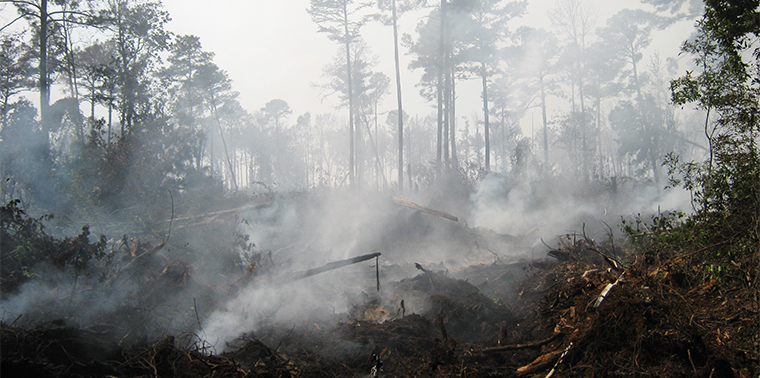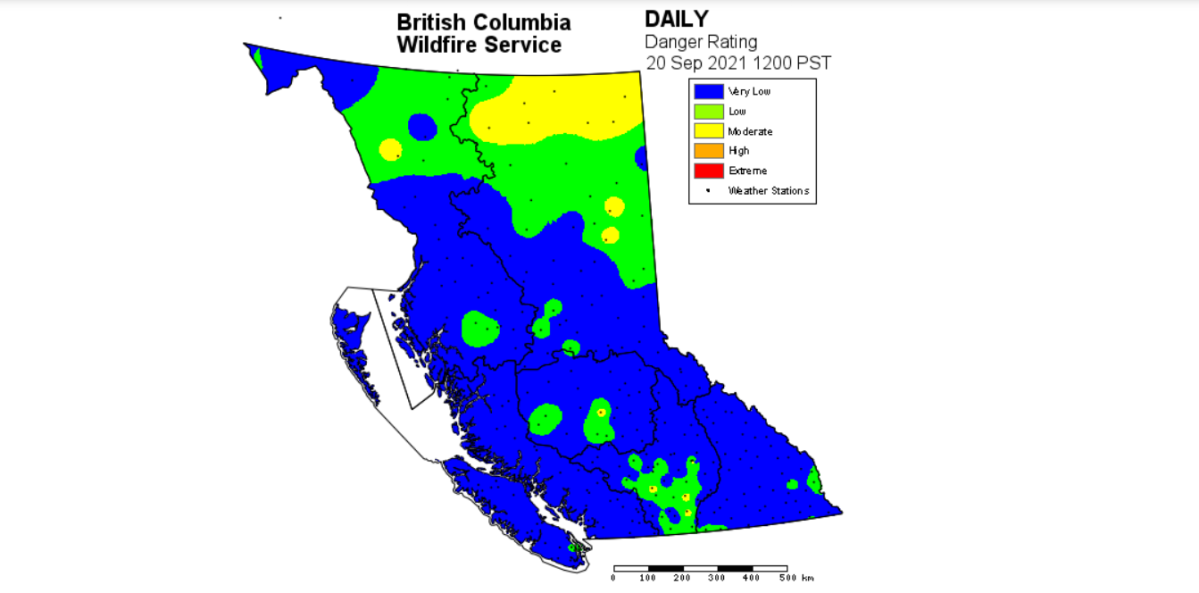After a record wildfire season, the BC Wildfire Service is finally able to take a bit of breather thanks to the cooler, wetter fall conditions settling in.

There are still a few new fires being ignited and 157 burning across the province as of Sept. 24. However, all but one are considered being held or under control and there no large or dangerous “fires of note.”
Karley Desrosiers, fire information officer with the BC Wildfire Service, explained that crews are primarily in clean up and monitoring mode as the risk of fire growth is low at this time.
However, while “the fuels in the top seven centimeters are quite saturated across the majority of the province, there is less moisture in the deeper layers,” she said.
This deep layer drought is clearly shown by the current B.C’s Drought Information Portal map as parts of Southern B.C. remain at Drought Level 5.
According to the B.C River Forecast Centre, drought conditions this summer were “significantly” worse than average.
“In mid-to-late August, streamflow conditions in many rivers of the South Interior and South-West B.C. reached 2nd percentiles or below; extremely rare conditions,” the agency said.

Get breaking National news
“Also, through most of the Okanagan region and Southwest B.C., cumulative rainfall over a six month period (March – August) was similarly below the 2nd percentile; extremely rare and potentially unprecedented.”
Despite this, Desrosiers says now that the fall weather is here, moisture is returning.
“There are small patches of the Okanagan where drought conditions are above normal for this time of year, but most of Southern B.C. is normal to slightly above normal,” she said.
“The conditions we saw in 2021 don’t necessarily mean that the likelihood or potential of holdover fires has increased.”

Holdover fires can also be called overwintering fires or zombie fires because they burn deep underground and then re-emerge in the spring.
These fires are more common in the boreal forests of northern B.C. because the organic layer is much deeper.
“There is greater fuel buildup and more duff and peat layers where fires can continue to smoulder through the winter,” Desrosiers said.

While the BC Wildfire Service isn’t concerned at this time, that could change.
“It depends more so on the weather patterns going into the fall and winter, specifically, the amount and type of precipitation as well as the temperatures,” Desrosiers said.
“If snow and rain are able to seep into deep fuel layers, any remaining smouldering could be extinguished. If precipitation freezes before permeating the deep organic layers, ice and snow could insulate the ground and underground smouldering could continue. The active wildfires will continue to be monitored.”
Zombie fires generally account for a minute fraction of fire damage, but they can occasionally become a major problem, according to a scientific report published in May 2021 by a group of scientists from the U.S. and the Netherlands.
“Between 2002 and 2018, overwintering fires were responsible for 0.8 per cent of the total burned area in Alaska, USA and the Northwest Territories of Canada,” the report found.
- Big B.C. election promises from both frontrunners mean big spending ahead
- Deal with BC Hydro could spare northern B.C. community millions to fix water quality
- ‘I ain’t stopping for no red light,’ said B.C. hit-and-run driver before deadly crash
- BC NDP say housing speculation tax working, pledge to double it
“However, in one year this amounted to 38 per cent.”
The BC Wildfire Service will continue to monitor the regions where there have been active fires. If zombie fires become an concern, they will be visible in the spring, during a time when wildfire activity and the risk of spreading is significantly less.
The public is urged to not enter terrain where there are current fire area restrictions. Even if an area restriction has been lifted, these regions can still be a risk. The public should keep clear of ash pits, stumps or trees in case there is continued burning throughout the winter.










Comments